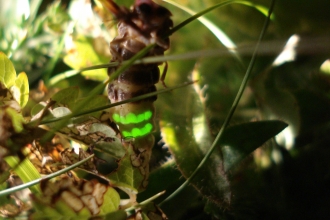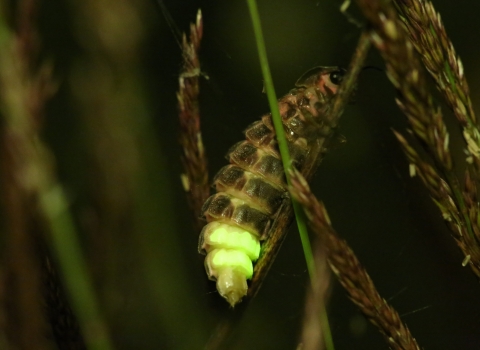Ready, steady, glow!
As the summer sun sets, the countryside comes to life. If you look closely you may be lucky enough to glimpse into the world of a glow-worm.
Our glow-worms, Lampyris noctiluca, are in the same family as fireflies but behave very differently. They are actually beetles, not worms, and the males could easily be dismissed as just another small black beetle. The females however are where it gets really interesting - unlike other beetles they don't have wings so are unable to fly. This makes finding a mate very slow going, so the females produce a bright green light from their abdomen to advertise themselves and attract a male. The males fly around looking for these lights from June to September, which is the main breeding season.
Glowing and flying use up a huge amount of energy so glow-worms are very particular about when to seek a mate: for example they tend not to try in windy or wet weather. The females glow just after dark but if they haven't attracted a mate in a couple of hours they will turn off their light and wait for the next night. These decisions in saving energy are even more important when you consider that an adult glow-worm can't eat. As a larva, the glow-worm is a vicious predator of slugs and snails and hunts them by following their trails. But once the glow-worm is an adult, its sole purpose is to find a mate.






